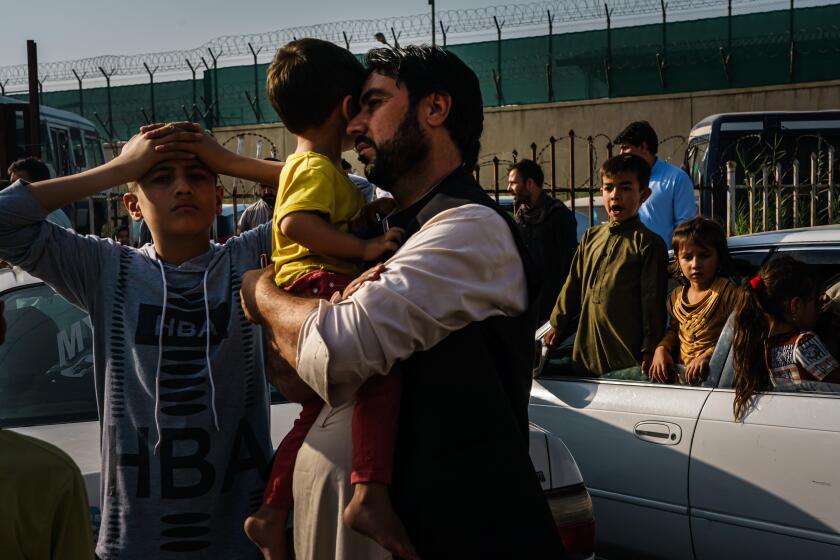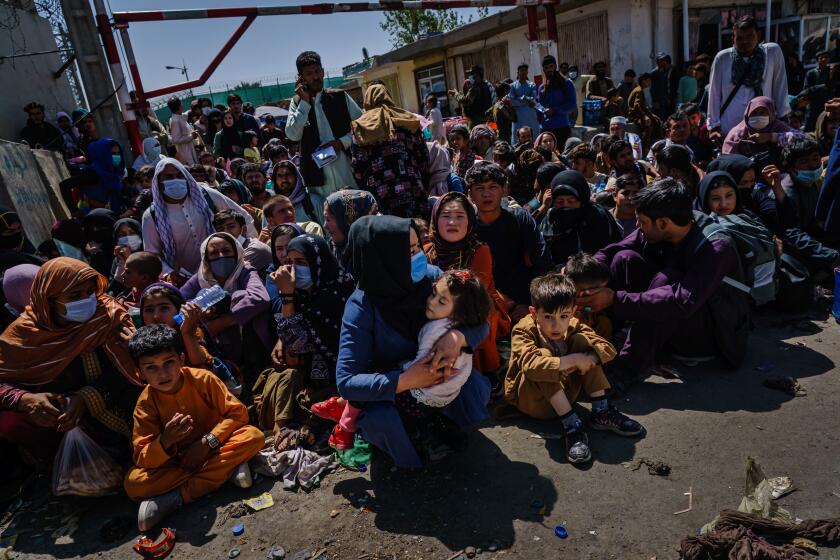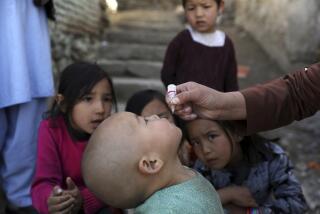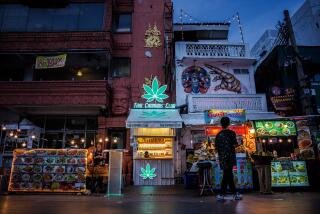The Taliban says it wants to ban drugs in Afghanistan. Here’s why it can’t
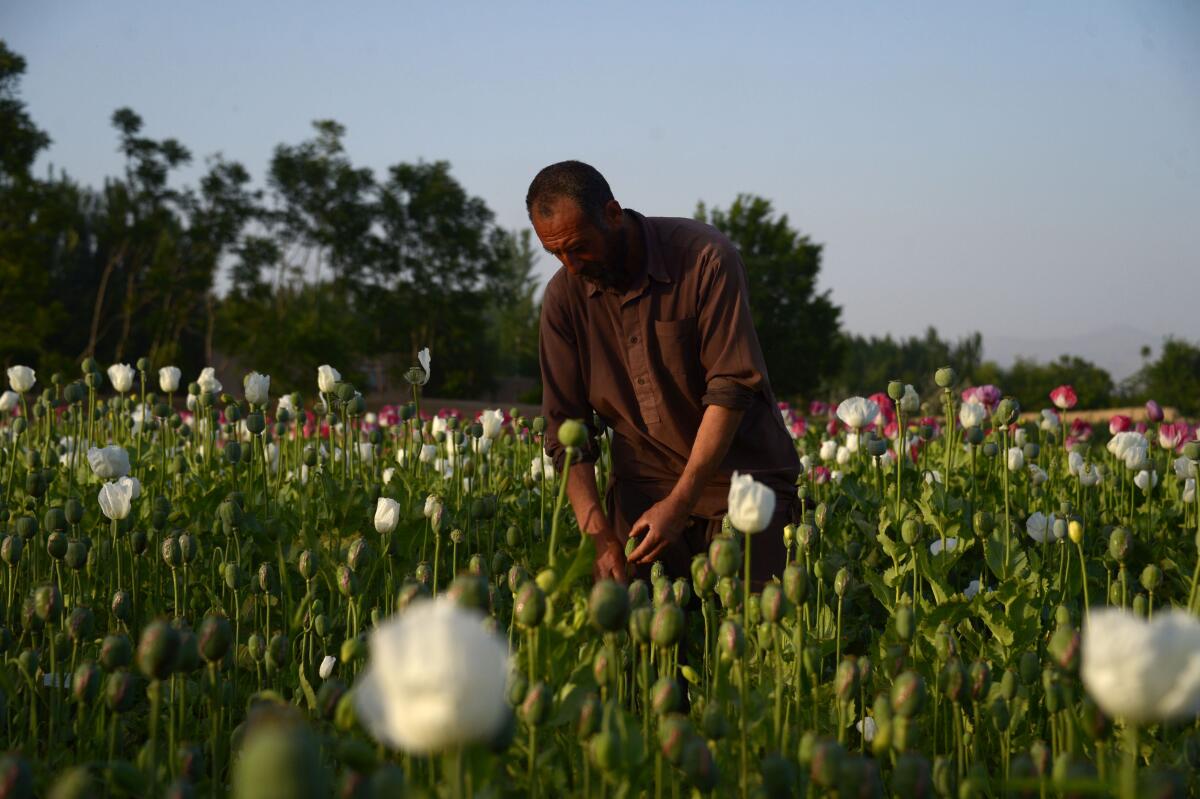
- Share via
In a few months, farmers in Afghanistan will begin planting the fall poppy crop, eventually blanketing the dusty countryside in resplendent white, pink and red flowers.
It will mark the first time in 20 years that the illicit plant — the raw ingredient of opium and its derivative, heroin — will grow free of interference from U.S. and coalition forces.
The role of policing poppy now belongs to Afghanistan’s new rulers, the Taliban, which has spent years exploiting the crop to help fund its insurgency, cementing the country’s longtime position as the world’s leading producer of opium.
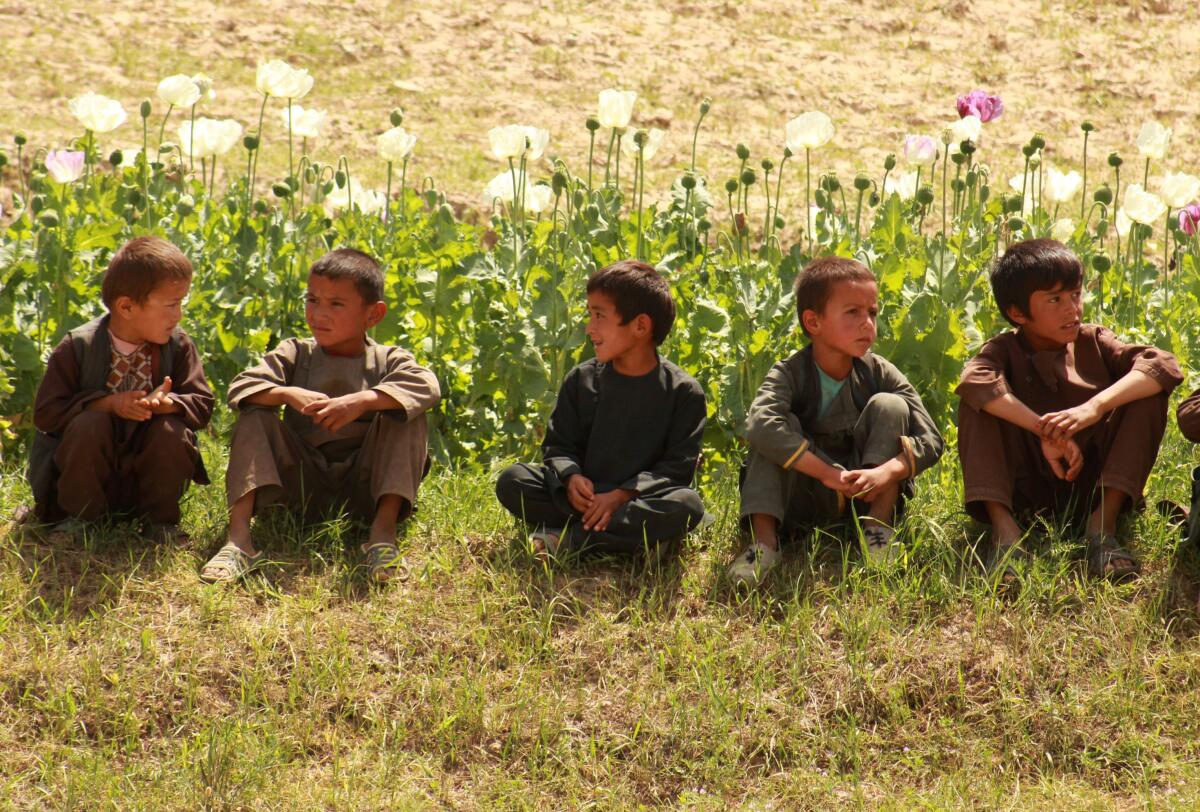
The militant group recently pledged to ban the production and sale of drugs, but weaning the country off the opium trade will be next to impossible given the nation’s dire economic situation and the lifeline poppy cultivation provides for Afghanistan’s vast rural population.
At its peak in 2017, annual opium production was valued at $1.4 billion, or 7.4% of Afghanistan’s gross domestic product, according to the United Nations. That tumbled to $400 million, or roughly 2% of GDP, in 2020 because of falling prices for the narcotic in the face of competition from synthetic opioids and methamphetamines.
But the crop remains one of the only reliable sources of income for farmers in a country ravaged by decades of war. The more unstable Afghanistan becomes, the more poppy is planted by those who have no safety net to hedge against the future.
“People who cultivate are often the poorest,” said Angela Me, a senior researcher at the U.N. Office on Drugs and Crime, who places Afghanistan’s share of the global opium market at over 80%.
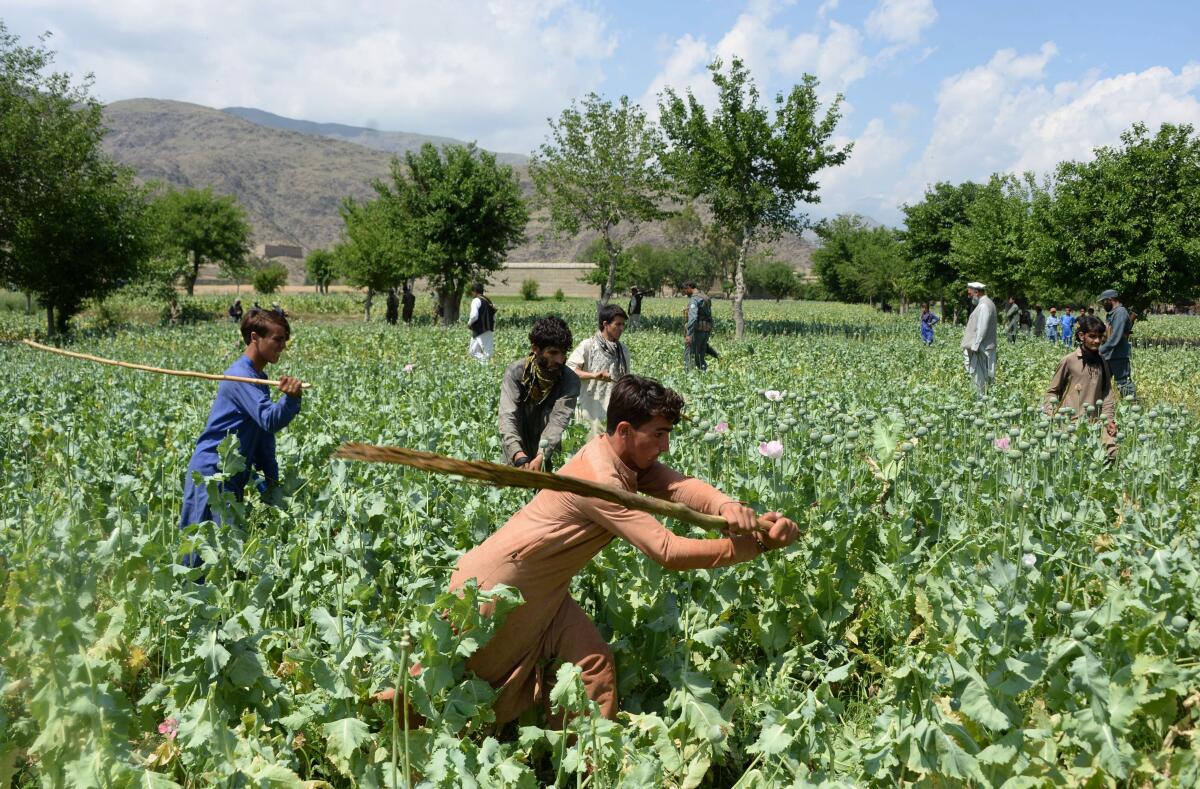
The Taliban knows first-hand how difficult it is to sustain a ban. The first time the group ruled Afghanistan, it prohibited poppy cultivation in 2000, reducing acreage by 90% and cutting the world’s supply of heroin by two-thirds. But the edict also plunged farmers into debt, leading to an unemployment crisis that damaged support for the Taliban in the run-up to its ouster by U.S. forces and their allies in 2001.
Experts say that by again declaring that it will not tolerate drugs, the Taliban is trying to persuade the world it should no longer be regarded as a pariah state so it can gain access to vital international aid and funding at a time when Afghanistan’s economy is on the precipice of disaster.
The local currency, the afghani, could soon collapse, now that regular deliveries of U.S. dollars to Afghanistan’s central bank have been halted. The Taliban has also been cut off from billions in development assistance.
With the Taliban in control, Washington seeks a new pressure point: dollars.
“Drugs are likely to be a bargaining chip with international players,” said Jonathan Goodhand, an expert on the global narcotics trade at SOAS University of London, who described the Taliban as being caught between foreign and domestic pressures.
“If the Taliban do try to introduce draconian measures to deal with drugs, they will undermine their support base and exacerbate the humanitarian and development crisis currently affecting much of the population,” he said.
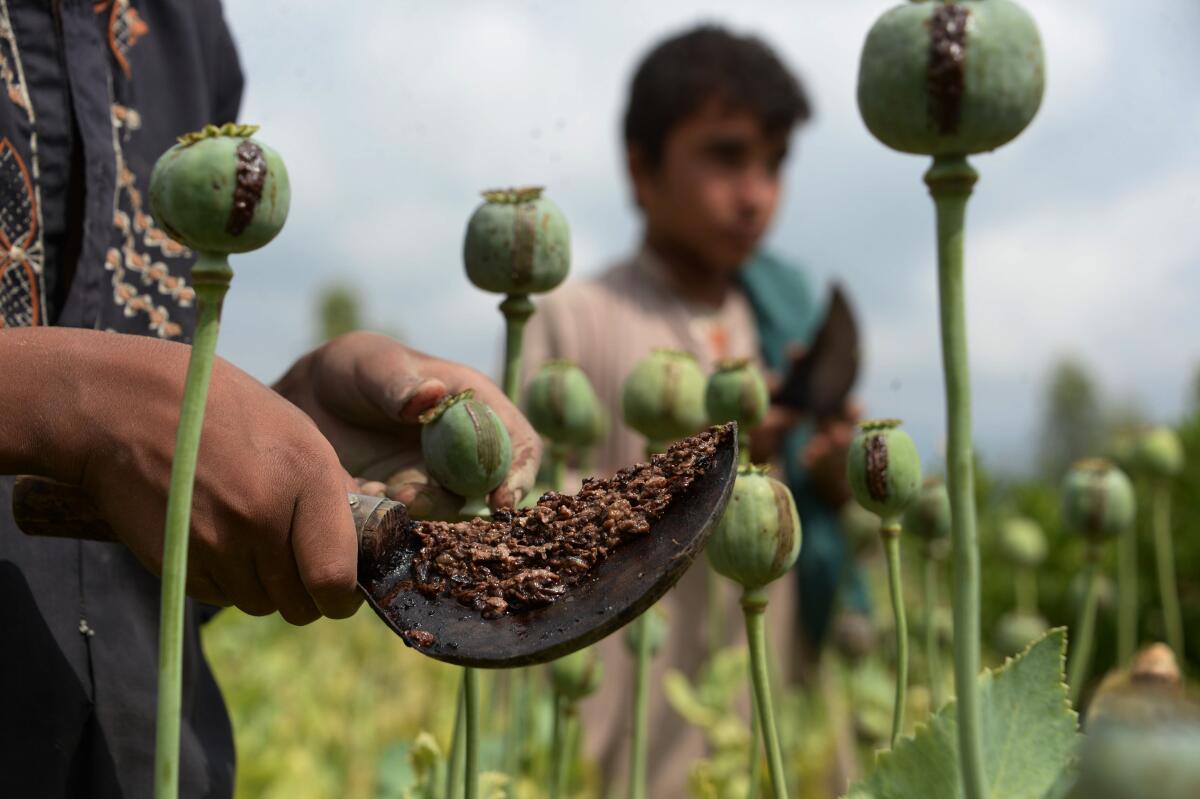
The same calculus vexed U.S. and coalition forces tasked with reconstructing Afghanistan after the fall of the Taliban regime nearly 20 years ago. Fighting drugs often had to take a backseat to the mission of dismantling Al Qaeda and other terrorist networks. To fight a counterinsurgency, American troops and officials often sought support from tribal leaders enmeshed in the opium trade. Military commanders were reluctant to destroy poppy crops for fear of alienating farmers they were trying to win over.
When coalition forces did try to counter narcotics, their efforts were regularly thwarted by corruption, botched planning and poor execution, concluded a 2018 report by the U.S. special inspector general for Afghanistan reconstruction.
A British operation in 2002 that involved paying farmers to destroy their poppy fields only encouraged new plantings after growers realized they could harvest the opium gum for profit and then destroy the remaining plants to receive compensation.
Fifteen years later, the U.S. launched costly airstrikes on suspected drug labs that failed to disrupt opium networks because the crudely built facilities could often be replaced within a day.
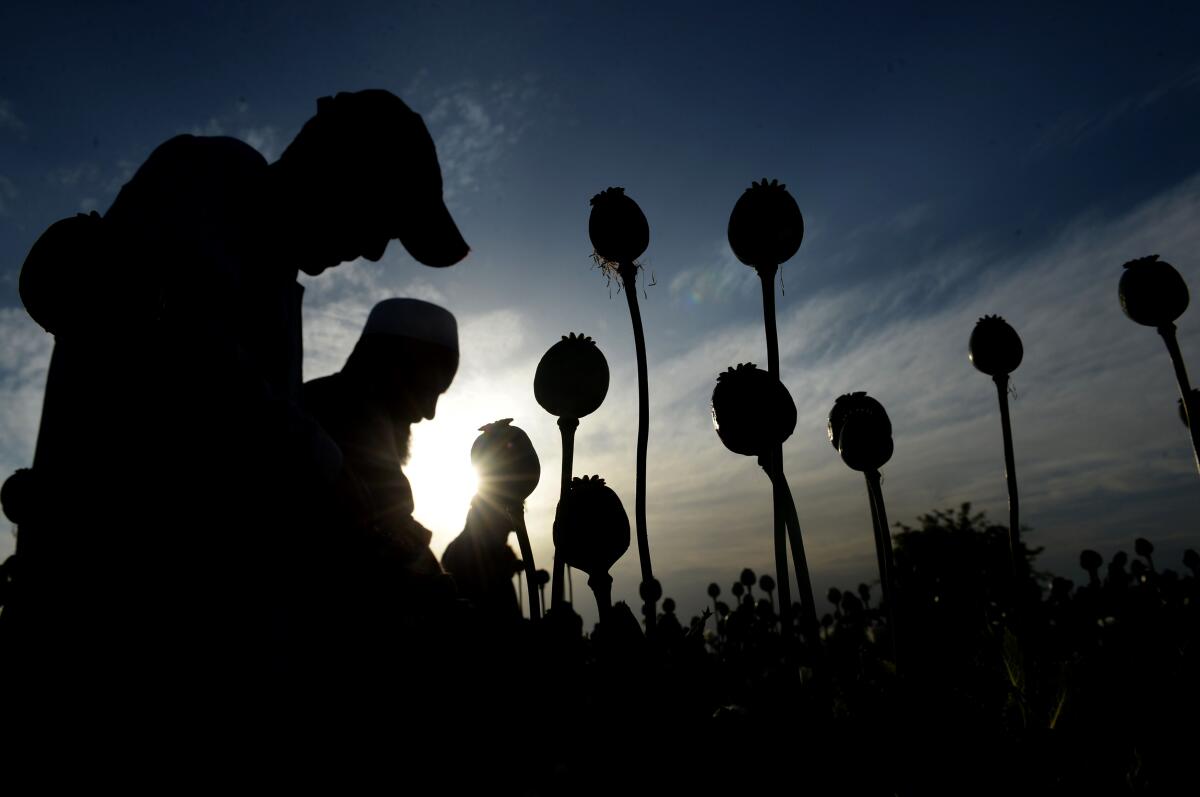
Also undermining interdiction efforts were Afghan government officials and authorities who accepted bribes or even engaged in smuggling. In 2005, U.S. Drug Enforcement Administration agents found about 10 tons of opium stashed inside the offices of the governor of Helmand province, the center of Afghanistan’s poppy belt.
The U.S. spent nearly $9 billion between 2002 and 2017 to counter Afghanistan’s opium trade. Rather than declining in that time, poppy acreage more than tripled.
“Despite this investment, drug production and trafficking remain entrenched,” the special inspector’s report said.
The counternarcotics campaign was driven by the belief that the Taliban was filling its coffers with taxes levied along the opium supply chain. One U.S. estimate said the drug trade provided 60% of the group’s funding in Helmand. But experts say those numbers are vastly overstated. The Taliban relies more on taxing ordinary goods such as fuel and cigarettes. Its revenues from levying taxes on NATO supply trucks during the peak of the U.S. surge in 2011 is believed to have exceeded its earnings from drug taxes.
The distinction matters, experts say, because blaming the Taliban for perpetuating the drug trade ignores the weak governance, lack of security and poverty that play larger roles in driving farmers to grow poppy.
Doctors, judges, athletes, activists: Afghan women trapped and considered at-risk under Taliban rule
In Taliban-controlled Afghanistan, women who fear being targeted for their work see dwindling hope of escape.
“The Taliban’s dependence on drug revenues has been exaggerated,” Goodhand said. “Drugs obviously did significantly contribute to the Taliban’s war chest — along with taxation of licit trade, which was probably at least, if not more, important than drugs.”
A ban on poppy cultivation could have unintended consequences on the global drug market, which was jolted this year by a military coup in Myanmar, the world’s second-largest supplier of opium.
The absence of Afghan opium and heroin, which mostly reaches users in Europe, Africa and Canada rather than the United States, could create a wider opening for highly potent synthetic opioids like fentanyl from China and India, which are preferred by traffickers because they’re less bulky. Those drugs have already made inroads in North America.
“If Afghanistan and the Taliban go for a ban, they could rapidly find themselves without a market in places like Europe,” said Vanda Felbab-Brown, a senior fellow at the Brookings Institution. “Other countries could easily switch to synthetic opioids from China and India. Synthetic opioids are far more dangerous. Heroin is the lesser evil.”
Felbab-Brown said there is precedent for a country eradicating its opium trade: Thailand. Starting in the late 1980s, the Southeast Asian nation was able to reduce its opium footprint by providing poppy growers alternative jobs. Replicating that success will be difficult in Afghanistan. Thailand had the benefits of peace, a rapidly industrializing economy and a far smaller opium trade to start with.
“It will be enormously difficult to achieve a poppy-free, drug-free” Afghanistan, Felbab-Brown said. “Even assuming that the country remains stable and doesn’t disintegrate into civil war and assuming it has meaningful international support, it will still take decades to wean Afghanistan off of poppy.”
There have been small pockets of success. Vithal Karoshi, a director for agricultural programs at the humanitarian organization Mercy Corps, said his group persuaded thousands of Afghan farmers to abandon poppy to grow high-value alternatives like almonds, pistachios and saffron.
The work was painstaking. Many farmers had no intuition for growing anything other than poppy. Some used too little water, others too much. It was also difficult to compete with the established infrastructure of the opium trade, where traffickers often paid growers up to 40% of the cost of cultivating their crops in advance. And, unlike high-end nuts and fruits that carry warehousing costs, poppy farmers could sell their harvests immediately to traffickers.
“These farmers have been trained to grow poppy for decades,” said Karoshi, who spoke from Bangalore, India, after recently being evacuated from Kabul. “They already have a market and value chain. It will take years of concentrated effort to get them to switch.”
More to Read
Sign up for Essential California
The most important California stories and recommendations in your inbox every morning.
You may occasionally receive promotional content from the Los Angeles Times.
